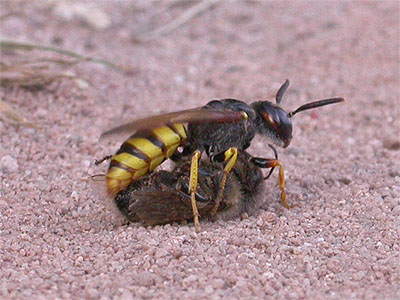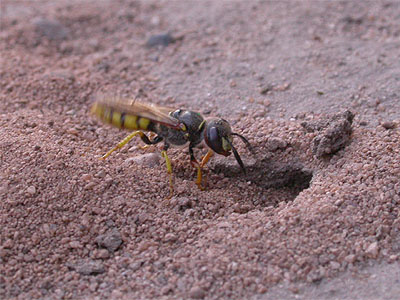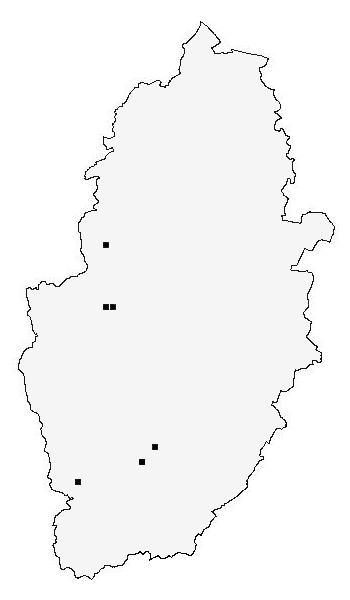| A small and
dense colony of these wasp-like insects was discovered on
a sandy path at the edge of woodland near Market Warsop
in July 2006. Upon my initial sighting, it was obvious
that these were one solitary bee that I had not come
across before and until recently, it would not have been
possible to see P. triangulum in Nottinghamshire
at all. Commonly called the Bee-killer Wasp, they were
rare and restricted to south coastal areas, but a
substantial expansion in range, followed a succession of
hot, dry Summers. P.
triangulum is a burrow-nesting species and they dig
out copious amounts of soil within minutes. The obvious
burrows are situated on open ground in dry, sandy soils.
Ejected material is flicked behind the wasp during nest
construction and it is a fascinating process to watch.
Their main prey is the Honeybee (Apis mellifera)
Females catch and sting feeding Honeybees and then carry
their paralysed victim back to their nests as shown in
the top photograph. The whole nesting area Dilys and I
came across, was littered with the bodies of dead
Honeybees. Through it's recent range expansion, the
Bee-killer Wasp is likely to occur at many sites within
the Sherwood Forest area.
|




